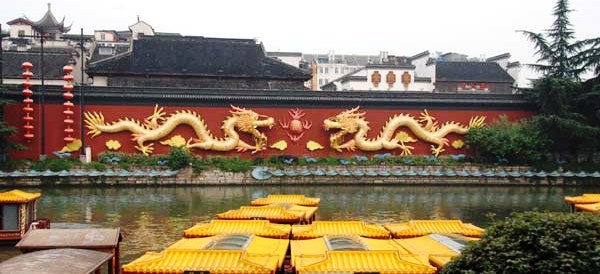
Nanjing
Today we visited several of Nanjing's best known attractions.
One of China's four ancient capitals, Nanjing was also known as Nanking,
has been the site
ofmany historical events central to China's long history. Sun Yat-sen was
China's first provisonal president where he made Nanjing the capital of
the newly created China.after the last emperor of the Qing Dynasty. The struggle
to
determine what direction China would take in the 20th century was cut shortby
Japan when it invaded China in 1937. Nanjing is most famous for the infamous
massacres which took place in then Nanking when the Japanese systematicallykilled
over 300,000 people, destoyed most of the city and injured hundreds of thousands
more.
Today, that horrendous event is remembered with a memorial
to those killed during the "Rape of Nanking." The memorial was dedicated in
1985 and contains archival material from Chinese, Japanese and foreign sources.
Much like the Holocast memorials that document the events of Hitler's scheme
to eradicate the Jews, the Nanjing Massacre Memorial contains many candid
images, documetns and testimonials from the residents of the city who survived
to interviews and materials from Japan and Japanese soldiers who took part
in the massacre. It is a place you should visit should you find yourself
in Nanjing someday.
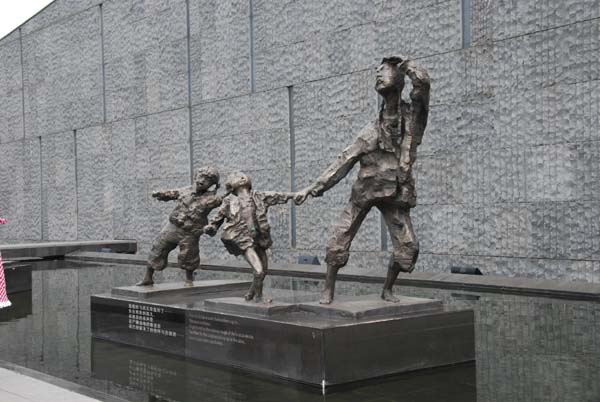
Sculpture at the entrace of the memorial.
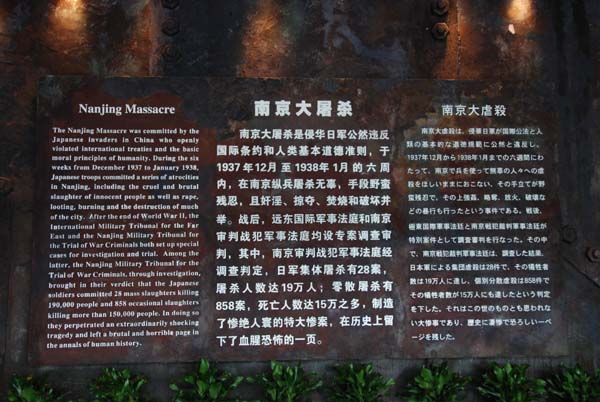
Information is written in English, Chinese and Japanese throughout
the site.
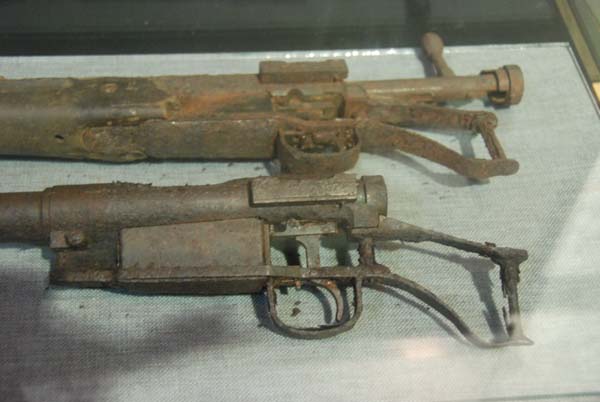
Many of the artifacts were found after the war during construction
decades later. Many Japanese weapons and munitons have been discovered and
are on display.
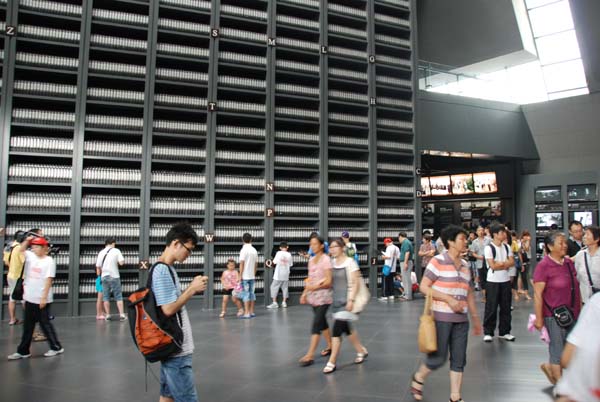
The names of thousands of the victims, where they lived,
how old they were and what they did is kept at the memorial and is available
to the public.
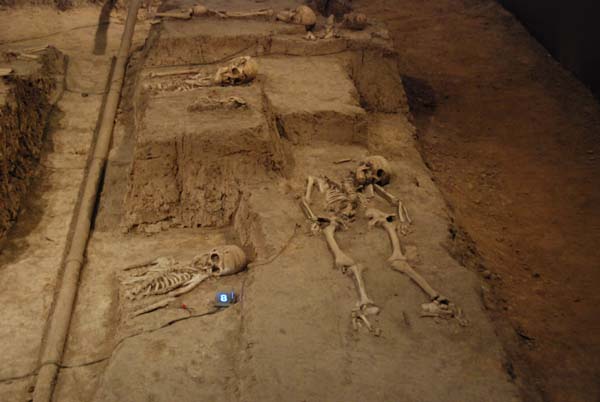
The memorial is built on a site where a mass grave of over
10,000 bodies were discovered in recent times. Their burial site remains
untouched and is
part of the memorial's collection,
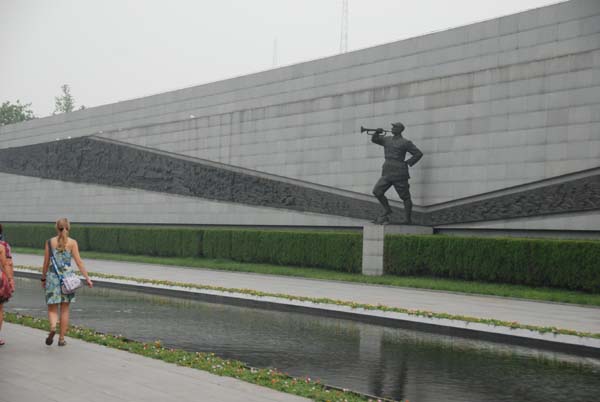
The memorial contains many impressive sculptures and large scale works of
art. Many have been inspired by the eventsin the 1930s and some are modern
interpretations by Chinese artists and designers.
Our next stop was to the Presidential Palace which has been used by all
of China's modern leaders from Sun Yat-sen to Mao Tsetung.
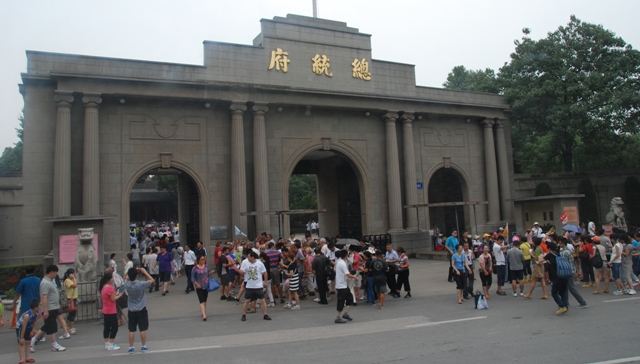
The Palace with thousands of our favorite friends visting on a hot humid
July day.
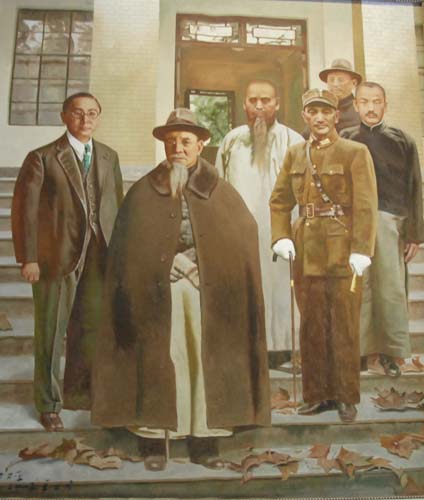
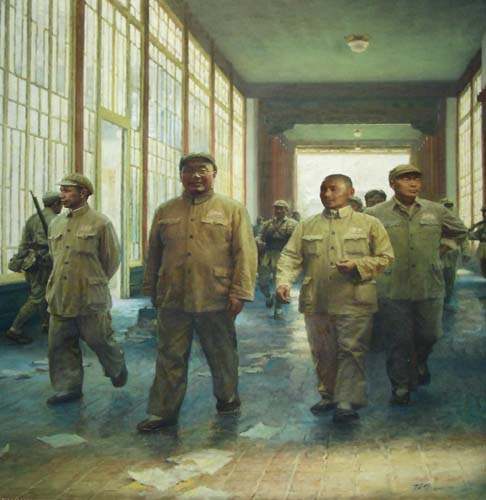
Paintings depicting Sun Yat-sen and Mao Tse-tung at the palace. Notice that
in one painting leaves are on the ground and in the other papers arescattered on the floor. One painting is a tranquil scene while the other
is one of action.
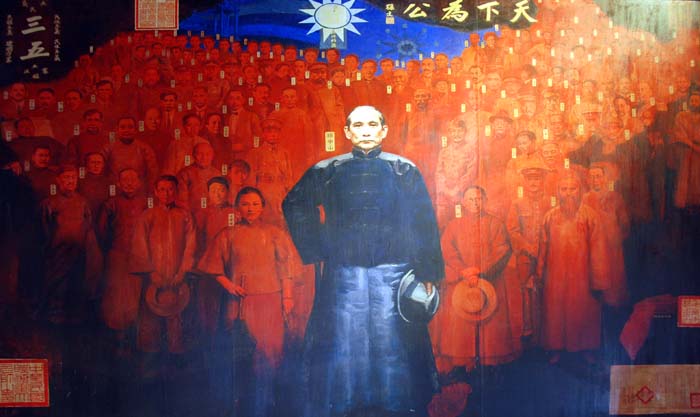
This idealized painting perhaps conveys what people were hoping for at the
turn of the 20th century when the Emperor of China was removed andSun Yat-sen
hoped to unify and modernize China. Unfortunately it would take another 40
years to see some stability in China and then a gradual presence
on the world scene.
What is interesting about the musuem is the amount of documentation and
artifacts that are exhibited. While one would think that during the Revoluntionary
Red Guard days that anything associated with the west, Chang Kai-chek and
other non-communist thought would be destroyed, the opposite seems to be
the case.
The letters, documents, and personal belongs of all the people
associated with China's modern history are many and on display
in the palace, now open to the public.
From the palace we toured one of Nanjing's oldest city gates, Zong Hua Gate.
Designed to entrap attackers, the gate is often known as the box gate because
of its many paths which eventually lead an attacker to a dead end. The gate
was defended with the use of cannons which were mounted on the top of the
gate walls.
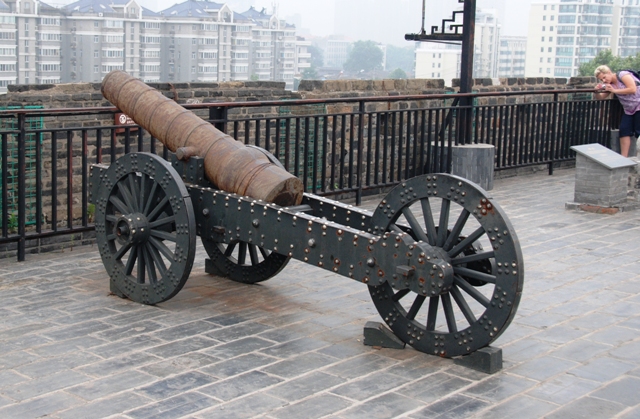
Replica of a cannon used to defend the city
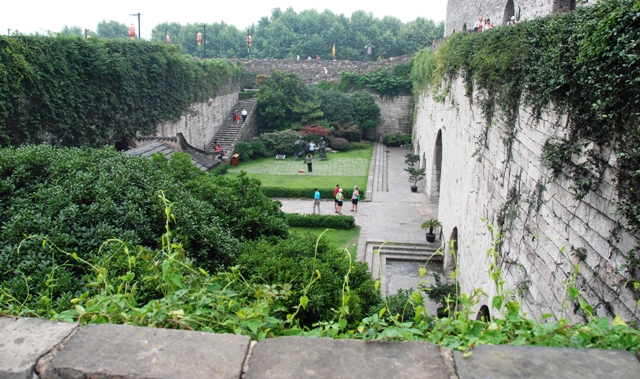
The design of the gate would funnel attacks from ramps into corridors and
passages where the defenders could pick off the enemy with bows and arrows.

Our final stop on this day tour of Nanjing was Confucius' Temple.
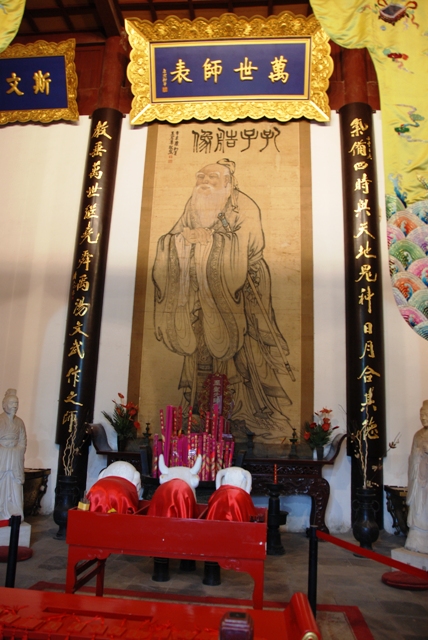
The temple area is a major tourist area for the city of Nanjing.
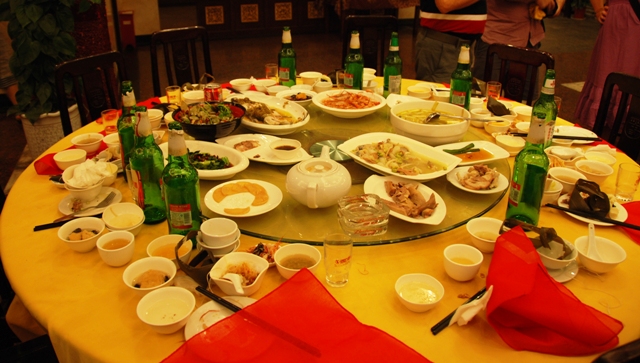
We had a multi-course dinner to end the day with plenty of beer to ward
off the heat and humidity.

Like many citiies in eastern and southern China, people flock to the streets
at night to enjoy a respite from the day's heat.
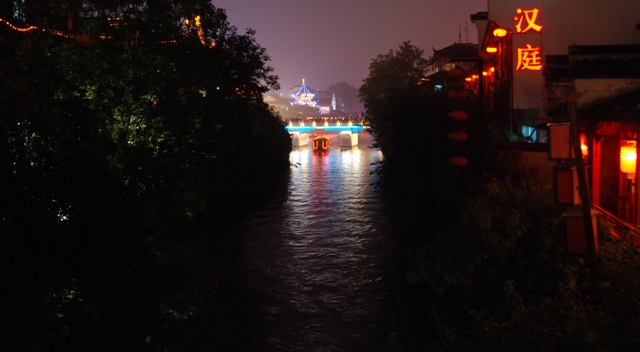
With numerous canals throughout the city, boats and barges take people on
rides to enjoy the coolness of the water.
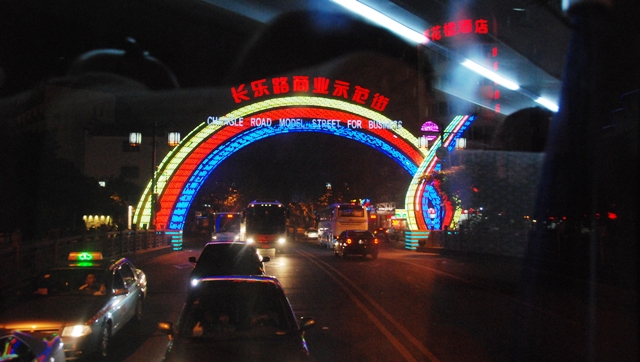
China's cities are as modern as any in the west, complete with light and
traffice pollution. Tomorrow I will head east to Zhenjiang and the town of
Dagang.
Back to the Shanghai home page.
All content and images © Anthony
Galván III. Any use requires written permission.
Back to the Travel page.









